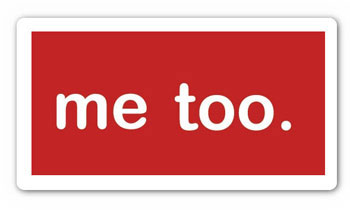Every now and then I stumble upon medium sized software development companies which play around with their product and their pricing. Observe these companies closely and you will realize a common trend running through all of these.
Most tend to start a product with a product idea and not a personal pain point that they want to solve to begin with. When you get subject matter specialists in the room and when you start spending hours gathering requirements, about a problem that you couldn't care less about, you tend to build mediocre products that, 'meet all requirements'.
The same subject matter specialist that billed you by the hour, also happened to bill your competition and what you have in your hand right now is a 'me too' product. Your product has screens which are very similar to the screens of your competition. Your product has features which are very similar to your competition. Your product also has pricing which is very similar to your competition.

You are what James Surowiecki describes in his article for the The New Yorker as, Soft in the Middle. He explains:
For Apple, which has enjoyed enormous success in recent years, “build it and they will pay” is business as usual. But it’s not a universal business truth. On the contrary, companies like Ikea, H. & M., and the makers of the Flip video camera are flourishing not by selling products or services that are “far better” than anyone else’s but by selling things that aren’t bad and cost a lot less.
These products are much better than the cheap stuff you used to buy at Woolworth, and they tend to be appealingly styled, but, unlike Apple, the companies aren’t trying to build the best mousetrap out there. Instead, they’re engaged in what Wired recently christened the “good-enough revolution.” For them, the key to success isn’t excellence. It’s well-priced adequacy.
These two strategies may look completely different, but they have one crucial thing in common: they don’t target the amorphous blob of consumers who make up the middle of the market. Paradoxically, ignoring these people has turned out to be a great way of getting lots of customers, because, in many businesses, high- and low-end producers are taking more and more of the market.
In fashion, both H. & M. and Hermès have prospered during the recession. In the auto industry, luxury-car sales, though initially hurt by the downturn, are reemerging as one of the most profitable segments of the market, even as small cars like the Ford Focus are luring consumers into showrooms.
And, in the computer business, the Taiwanese company Acer has become a dominant player by making cheap, reasonably good laptops—the reverse of Apple’s premium-price approach.
While the high and low ends are thriving, the middle of the market is in trouble. Previously, successful companies tended to gravitate toward what historians of retail have called the Big Middle, because that’s where most of the customers were. These days, the Big Middle is looking more like “the mushy middle” (in the formulation of the consultants Al and Laura Ries).
The companies there—Sony, Dell, General Motors, and the like—find themselves squeezed from both sides (just as, in a way, middle-class workers do in a time of growing income inequality). The products made by midrange companies are neither exceptional enough to justify premium prices nor cheap enough to win over value-conscious consumers.
The same article also talks about why it is so tempting and yet so painstakingly non-rewarding to stay in the comfortable middle path:
This doesn’t mean that companies are going to abandon the idea of being all things to all people. If you’re already in the middle of the market, it’s hard to shift focus—as G.M. has discovered. And the allure of a big market share is often hard to resist, even if it doesn’t translate into profits. According to one estimate, Nokia has nearly twenty times Apple’s market share, but the iPhone alone makes almost as much money as all Nokia’s phones combined.
The argument becomes much more dominant if you are launching your own product or service. You are not exactly a Sony or a Nokia and chances are the soft middle in your industry or domain is already taken by someone. Your only chance of surviving is that you make the best freaking products out there. Build awe and surprise by innovating the best product out there.
If you can't build a seriously kickass product that people would pay a premium price for, build something acceptable that works and disrupt your competition with the lowest of prices.
After all, safe is risky, remarkable is fun.
Go on, get out of that circle mediocrity when it comes to products and prices.
I wish you good luck.
Comments are closed.